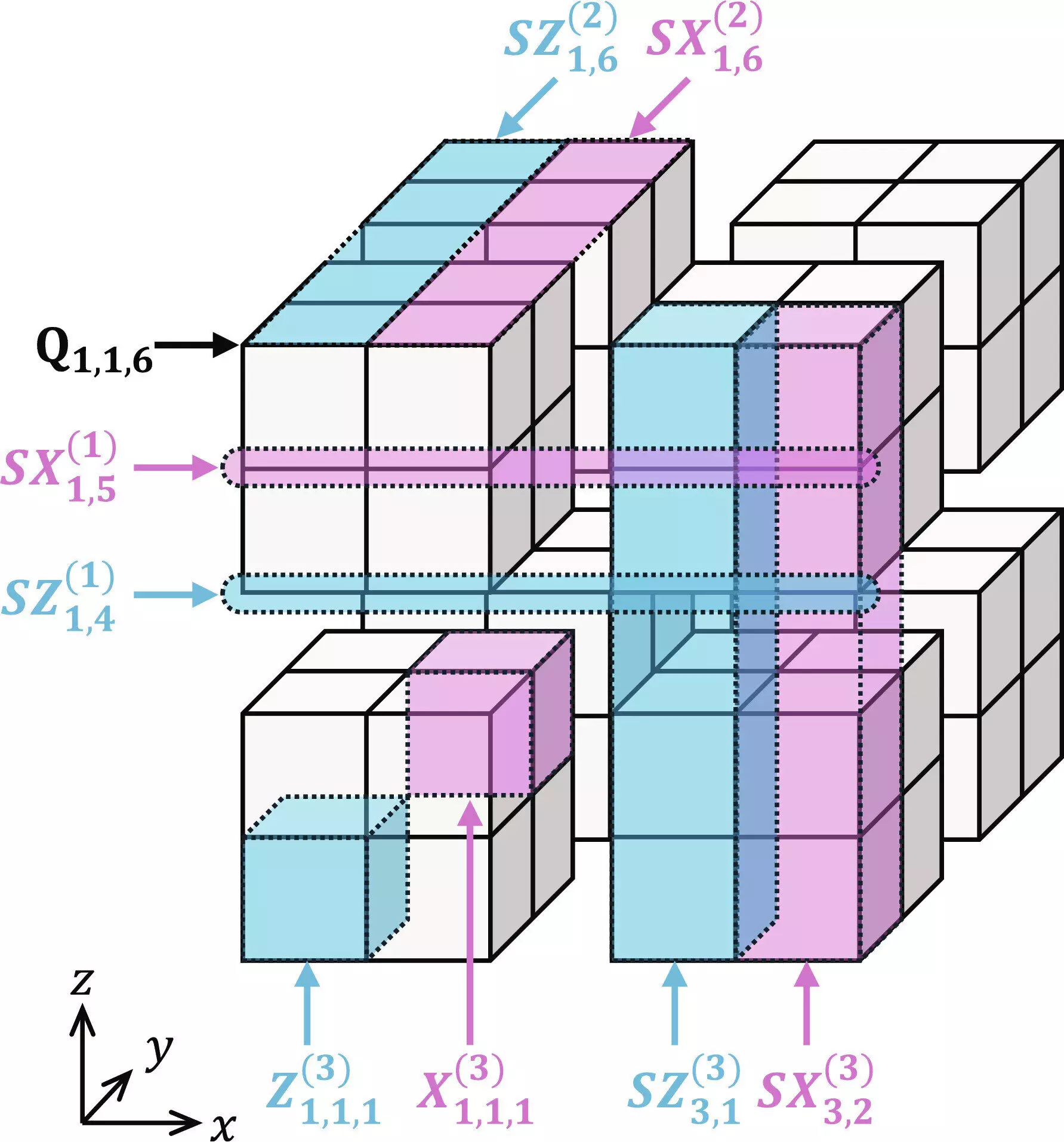Quantum computing is at the forefront of technological innovation, promising unprecedented computing power and breakthroughs in various fields. However, the realization of fault-tolerant quantum computers has proven to be a complex challenge due to the inherent fragility of quantum systems. Traditional approaches to error correction involve encoding a single logical qubit onto multiple physical qubits, leading to scalability issues and resource overheads. In light of these challenges, Hayato Goto has introduced a novel quantum error correction approach using “many-hypercube codes.”
Goto’s groundbreaking approach is based on a high-rate concatenated quantum code structure, which allows for efficient error correction and parallel processing. The unique feature of many-hypercube codes lies in their elegant geometry, where logical qubits are mathematically visualized as forming hypercubes. This innovative design enables the development of a dedicated decoder that leverages level-by-level minimum distance decoding for optimal performance. Unlike traditional methods, many-hypercube codes facilitate parallel execution of logical gates, akin to parallel processing in classical computers.
One of the key achievements of Goto’s research is the remarkable encoding rate of up to 30% offered by many-hypercube codes. This rate is unprecedented in the realm of fault-tolerant quantum computing and sets a new standard for efficiency and performance. Despite the high encoding rate, the performance of many-hypercube codes remains comparable to conventional low-rate codes, highlighting their effectiveness in error correction and fault tolerance.
The introduction of many-hypercube codes represents a significant advancement in the field of quantum error correction. By combining elegant geometry with innovative decoding techniques, Goto has paved the way for highly efficient and parallel error correction methods. The potential impact of many-hypercube codes extends beyond quantum computing, as they offer insights into optimizing error correction strategies in complex systems.
As research in quantum computing continues to evolve, the adoption of many-hypercube codes could revolutionize the way we approach error correction and fault tolerance. The scalability and efficiency of these codes open up new possibilities for the development of fault-tolerant quantum computers that surpass conventional computing capabilities. Moving forward, further exploration and refinement of many-hypercube codes could unlock the full potential of quantum computing in solving real-world problems and advancing scientific discovery.
Hayato Goto’s pioneering work on many-hypercube codes marks a significant milestone in the field of quantum error correction. By introducing a novel approach that combines mathematical elegance with practical efficiency, Goto has laid the foundation for the next generation of fault-tolerant quantum computing. The future of quantum error correction looks promising with the introduction of many-hypercube codes, offering a path towards realizing the full potential of quantum computing technology.


Leave a Reply
You must be logged in to post a comment.